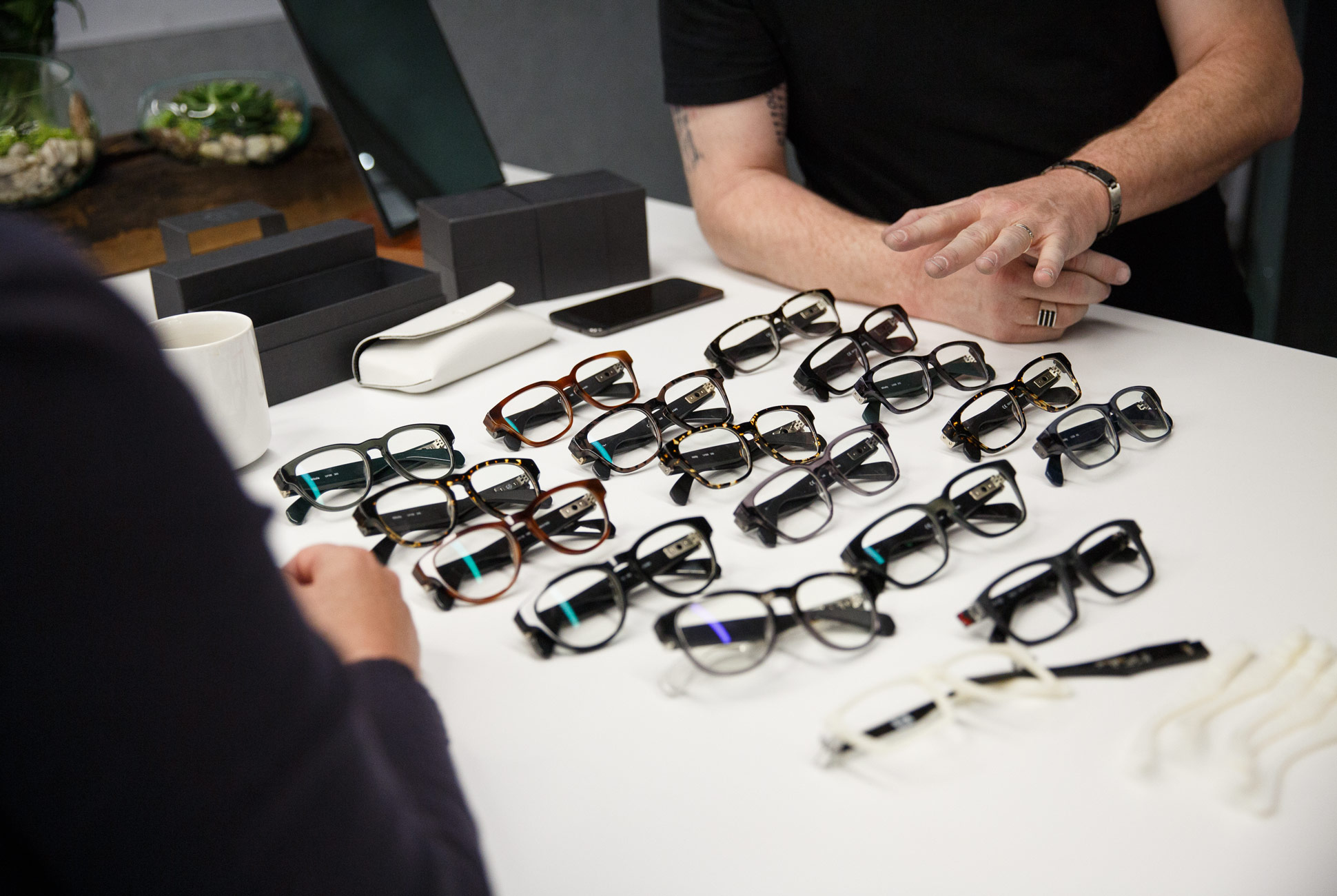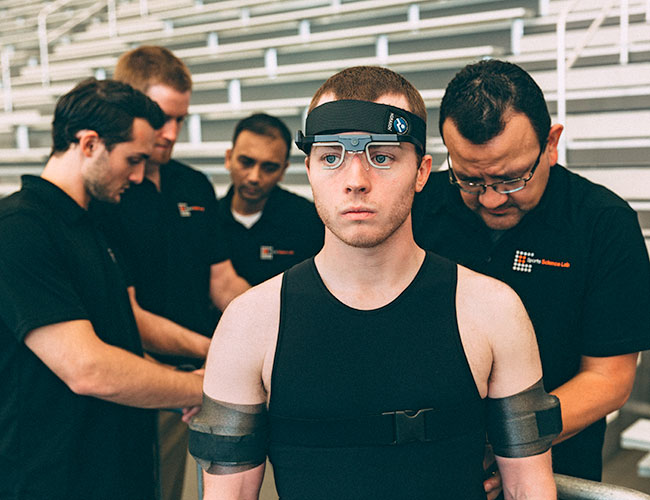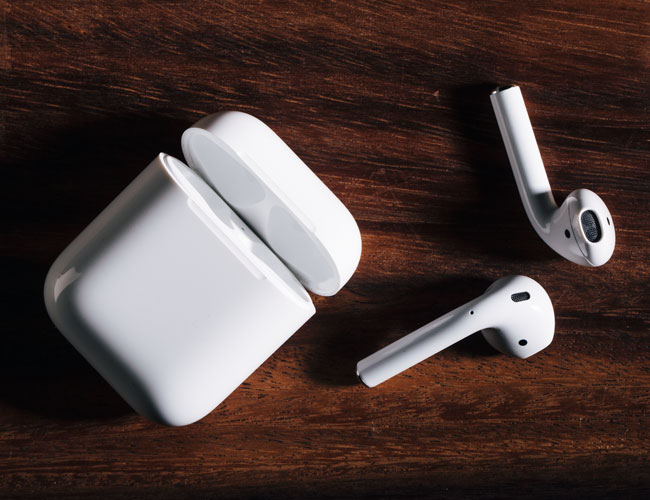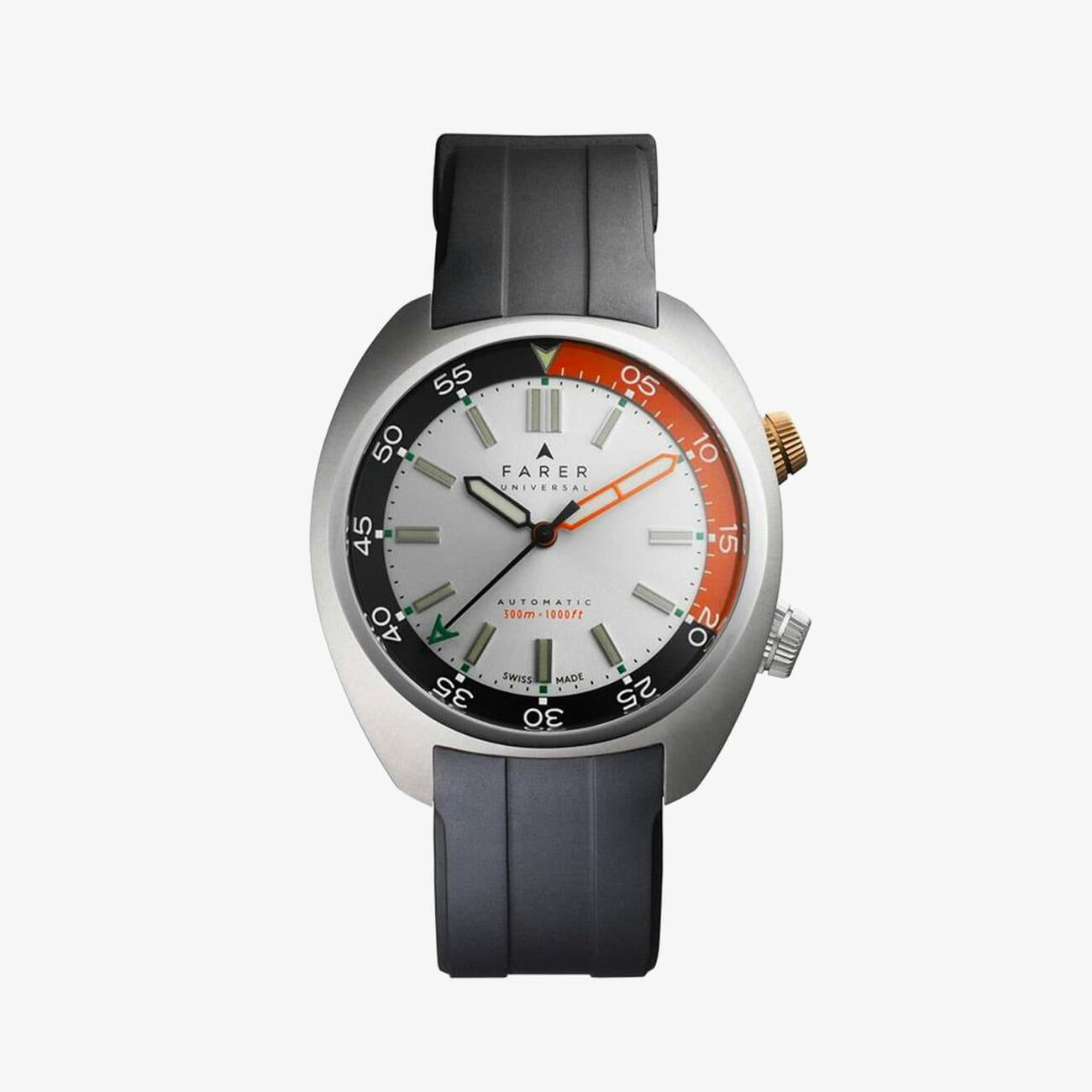T
he corner of 40th and Avenue of the Americas, on the south end of New York City’s Bryant Park, is officially named Nikola Tesla Corner. In the adjacent building — 8 West 40th Street — Nikola Tesla, the less-remembered partner of Thomas Edison, worked for the better part of 12 years. “He was a god,” says Jay Sales, innovation strategist for VSP Global and co-lead of VSP Global’s innovation lab, The Shop. “If you go to Niagara Falls, the whole generation system is Tesla’s. He was also the first one to do electric over the air. He was so much ahead of his time.”
Tesla is long gone, but the air of innovation lingers for others. In the same building is The Shop East, where a small team of industrial designers, software and biomedical engineers and others work to push the boundaries of vision technologies. “The teams we build here are self-run and they’re also looking for new ways to do things,” Sales says. “They’re experimenters, explorers.” And they’re all working toward one goal: evolving design and technology to enhance lives.
For context: There are three branches of The Shop: The Shop East (NYC), The Shop West (Sacramento), and The Shop Midwest (Columbus). East focuses mostly on industrial design, West on hardware and software, and Midwest on the doctor-patient relationship. All teams collaborate together.
The Shop is part of VSP Global, which is the largest healthcare company on the planet with over 80 million members. Also under VSP Global’s umbrella is: Marchon, the third-largest manufacturer of eyewear; the VSP Optics Group, an industry leader in new lens technologies; and Eyefinity, the largest EHR and EHR software company in the eye-care industry. And fortunately, The Shop pretty much has free license to innovate using all of VSP Global’s vast resources. And they can innovate quickly.
“The teams we build here are self-run and they’re also looking for new ways to do things. They’re experimenters, explorers.”
“In the old days,” Sales says, “you’d design in 2D, send stuff off to model makers in factories and cross your fingers.” If the prototype model was wrong, the whole process started again; development went slowly. The Shop has 3D printers, a Shopbot and other professional equipment that makes prototyping efficient; all the tools are on site, so they make what they want, when they want it. “Essentially we are taking advantage of the maker movement and process,” Sales added. “If you’re a large corporation then you can invest in major pieces [of equipment], but there’s no fucking reason to; what’s going on in the maker movement is good enough, and sometimes better.”
The Shop has its hand in wearable technologies, the internet of things and even digital and precision medicine. The group worked on Google Glass, but is best known for its collaboration with Nike and Zeiss Optics on The Wing, a masterfully crafted pair of $1,200 sunglasses for elite runners. The Wing is a single lens that wraps around a runner’s head completely, weighing just 26 grams.

Level frames in various stages of prototyping.
“Nike challenged us to completely redefine the DNA of what Nike Vision eyewear looks like,” says Leslie Muller, VP of design for Marchon Eyewear and co-lead of The Shop. Nike wanted glasses specifically designed for sprinters, but they found that most sprinters didn’t wear eyewear; there were fogging issues, and the glasses moved during runs, which was distracting. Working with doctors and wind tunnels, The Shop’s team studied everything — head positions, heat mapping, energy use in sprinters’ bodies, flow dynamics — to design lightweight, comfortable sunglasses that reduce drag. The design had to “look” fast, too, as psychology is intertwined with performance.
The Wing blurred the boundaries between lens and frame. Everything extraneous was taken out, including the hinges. Simply put, they were sunglasses designed to do a 15-second sprint, and that’s it. At the 2016 Rio Olympics, a few athletes wore them: Yasmani Copello (Turkey), who won bronze in the men’s 400m hurdles; Ruth Beitia (Spain), who won gold in the women’s high jump; and Brittney Reese (USA), who won silver in the women’s long jump.
After the games, Nike sold a limited run of them, which sold out. But technology from the Wing has been drafted into more commercial pieces still available today, like Nike’s Vaporwing, Vaporwing Elite and Tail Wind. (They all have hinges.)
For the past two years, The Shop has also been working on Level, a pair of bespoke eyeglasses with activity-tracking sensors built into the temple. In each pair there’s a gyroscope, accelerometer, magnetometer, Bluetooth and a battery. Sales also notes that Level won’t be any more expensive than a nice pair of traditional eyeglasses. “We’re not adding $200 on what is already an expensive item.”
Level will measure steps and activity time, and calories burned will be calculated in a companion app. Because Level will measure data from above the shoulders, in many ways it will be more accurate that a wearable on your wrist; swinging your arms while your dog stops to pee won’t be counted as steps. The glasses are made to look like a normal pair of eyeglasses and are manufactured in Marchon’s factory in Puos d’Alpago, Italy. And they will eventually come in numerous styles.
The idea is that these “smart” eyeglasses can become part of people’s daily wardrobes; the adoption potential is huge, as, according to Muller, 15 million people wear glasses in the U.S. alone. Level will not be a hardcore fitness tracker — it’s not for runners or athletes, specifically. All the data tracked is designed with the goal to sync with an individual’s medical record, should they want to sync it, and in that way Level could as the backend of a HIPAA system, Sales says. “Most importantly we’re making this data your data, not ours. It [all] comes back around to enhancing lives and not being intrusive.”
The possibilities for Level and The Shop are immense. In the coming years, expect more technology to go into the company’s frames and lenses, which, as Sales explained, will further encourage people to get a full eye exam from a licensed optometrist. “When you do a full health assessment through the eye, you can get early detection for diabetes, glaucoma and hypertension,” Sales says. “Diabetes, for example, can be detected six years before anyone else can pick it up — it’s all seen in the back of the eye.”
The Shop is currently working on numerous confidential projects, such as a project to help people with low vision, and maybe something with augmented reality. As for Level, prototypes are being tested by USC’s Center for Body Computing, and an academic study is expected later in 2017. There are currently three frame designs, each named after an inspirational person: Hedy (after Hedy Lamarr), Minsky (after Marvin Minsky) and Nikola, for the man whose building The Shop East’s team currently calls home.
NY Sports Science Lab uses metrics to fine-tune an athlete’s every stride, punch and leap. We tried it out. Read the Story




